Vet-recommended flea treatments for your dog, from topical solutions to collars
How long do they take to work? And how can you treat your home? We answer all your questions
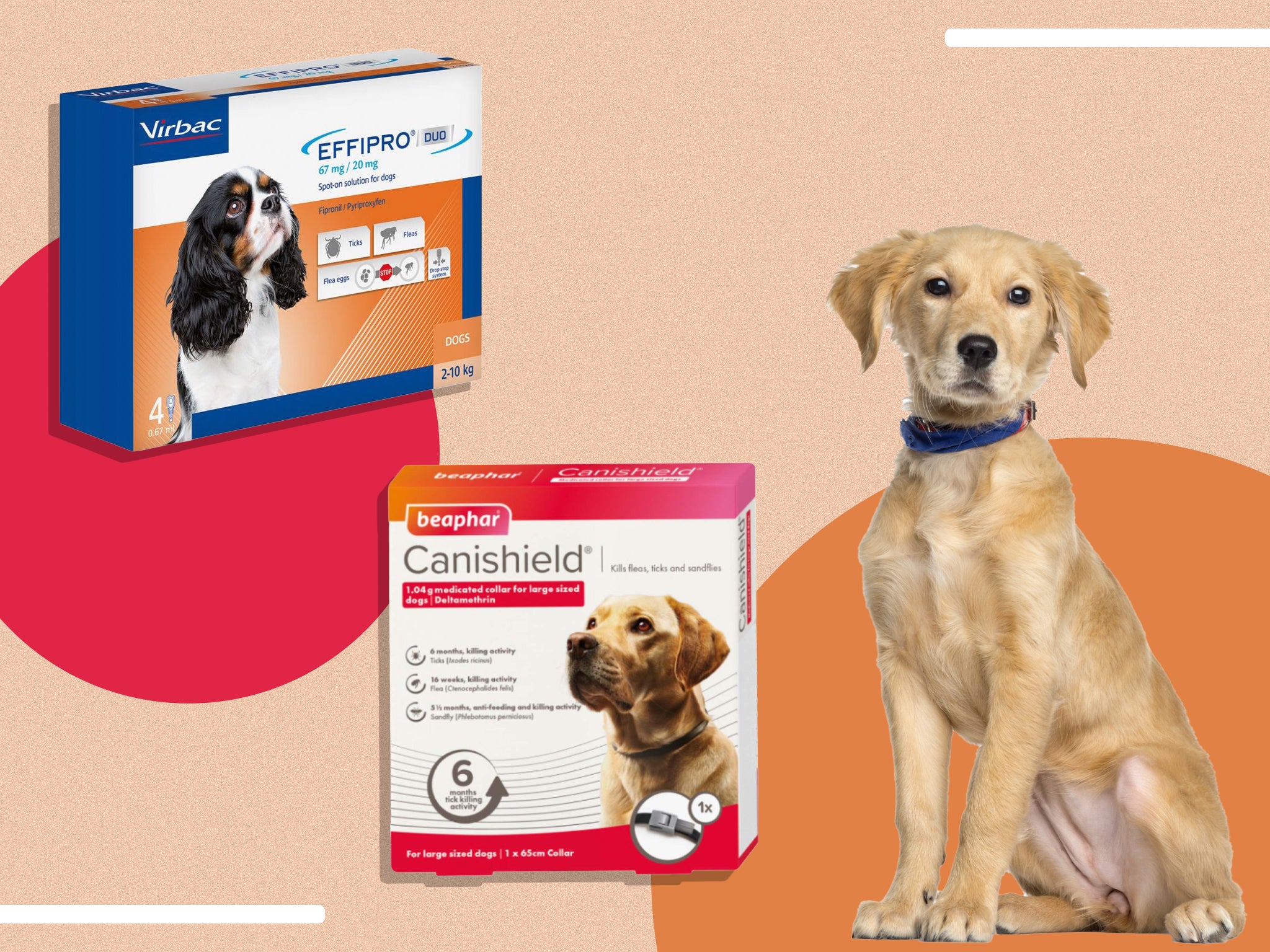
Your support helps us to tell the story
From reproductive rights to climate change to Big Tech, The Independent is on the ground when the story is developing. Whether it's investigating the financials of Elon Musk's pro-Trump PAC or producing our latest documentary, 'The A Word', which shines a light on the American women fighting for reproductive rights, we know how important it is to parse out the facts from the messaging.
At such a critical moment in US history, we need reporters on the ground. Your donation allows us to keep sending journalists to speak to both sides of the story.
The Independent is trusted by Americans across the entire political spectrum. And unlike many other quality news outlets, we choose not to lock Americans out of our reporting and analysis with paywalls. We believe quality journalism should be available to everyone, paid for by those who can afford it.
Your support makes all the difference.Whether you’re new to dog ownership or have a longstanding pup companion, keeping your four-legged friend flea-free is paramount.
It’s easy for your dog to come into contact with fleas, either through other animals or while on a walk in the woods. Nick Sutton, science communications adviser at The Kennel Club, says that owing to their strong back legs, fleas can “jump easily from host to host, or from the environment to host”, meaning that they can very quickly spread.
It’s important to catch them early because, aside from causing discomfort, “fleas can cause serious diseases in cats and dogs, including flea allergy dermatitis and even anaemia”, notes Sutton. “They can also carry tapeworm larvae, which can infect your pet if they accidentally eat fleas while grooming themselves.”
The tell-tale signs include your dog itching a lot more than usual, or biting themselves, says Dr Luke Gamble, CEO of Worldwide Veterinary Service. And when a serious infestation occurs, “patches of hair loss may even develop”, he adds.
If you suspect your dog has fleas, Dr Gamble recommends looking closely at their skin. “You may see some tiny, dark insects moving around,” he says, or the skin itself may look “red and bumpy” and there may be evidence of tiny black specks which is flea “dirt” (excrement).
Read more:
But, Kathleen Pohl, veterinary surgeon at My Family Vets told The Independent that “some pets tolerate large numbers of fleas before showing signs of irritation”, meaning there can be a big infestation before you are aware of the problem. This is why “prevention can be easier and more effective than treating an outbreak”, she says.
“Keeping your dog safe from fleas is easy and flea treatments come in different forms – usually collars, spot-on solutions or tablets,” says Pohl. The problem is that most people don’t realise many products you apply to your pet only kill the adult fleas, which are only of a small number compared to huge amount of larvae and eggs. “These immature life stages often require a household treatment to effectively prevent them from reinfesting your pet,” she adds.
Pohl recommends that “if you are struggling to control a flea outbreak, think carefully about your environment and where fleas may be lurking, and remember to treat your car or relative’s house if your dog is a frequent visitor there”.
When looking for a preventative treatment, PDSA veterinary nurse Nina Downing recommends purchasing from a “reputable pet store or online retailer” and keeping an eye out for the “products that are categorised as ‘NFA-VPS’”, which means “they can only be sold by a vet, pharmacist or suitably qualified person”.
Although these leading veterinarians can’t recommend specific products, we’ve asked them for the lowdown on each treatment type, so you can work out which one is best for your pet. From topical medications to home treatments, these are the ways to keep your four-legged friends free from fleas.
Topical flea medication or spot-on treatments
One of the most common flea treatments are spot-on or topical medications, which “are applied to the dog’s skin with a pipette”, says Pohl. They work because the active ingredients are “absorbed into the dog’s bloodstream, skin glands or fat layer under the skin and kill living fleas on the dog and prevent future infestation”, says Downing.
A popular go-to brand for this type of treatment is Frontline (from £39, Petsathome.com), which is categorised as “NFA-VPS” and can be purchased based on your dog’s weight: small (2-10g), medium (10-20kg) or large (20-40kg).
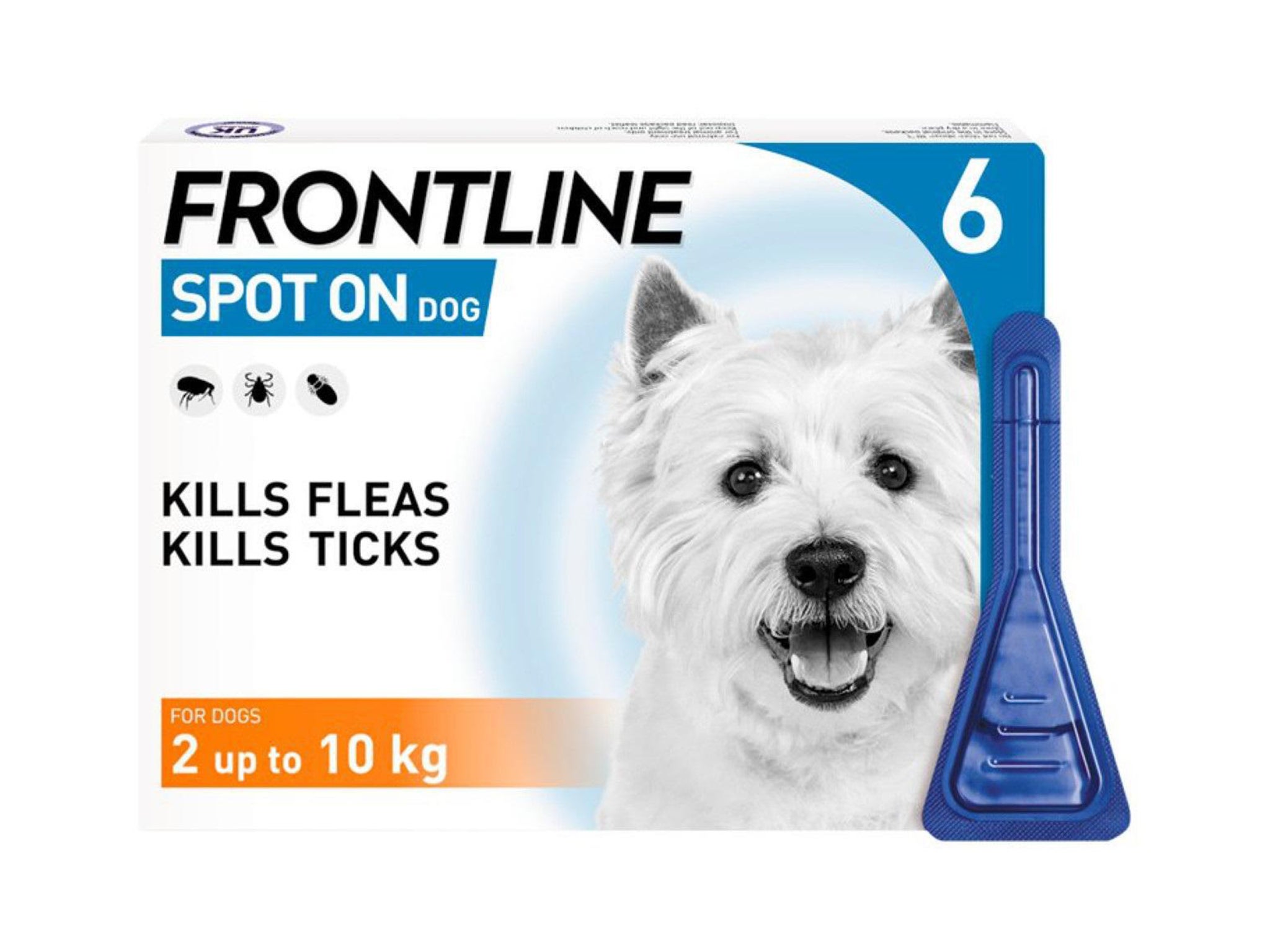
With these types of treatments, “you might notice a greasy patch on the back of your dog’s neck for a day or two, but do not worry, this is normal”, advises Pohl. And the “fleas usually start to die within 12 to 24 hours of application”.
An alternative to Frontline is Virbac Effipro duo spot-on treatment (from £25, Supplementsolutions.co.uk), which is also NFA-VPS categorised and can be purchased based on your dog’s weight – small (2kg-10kg), medium (10-20kg), large (20-40kg) or extra large (40-60kg). It should be applied between your dog’s shoulder blades.
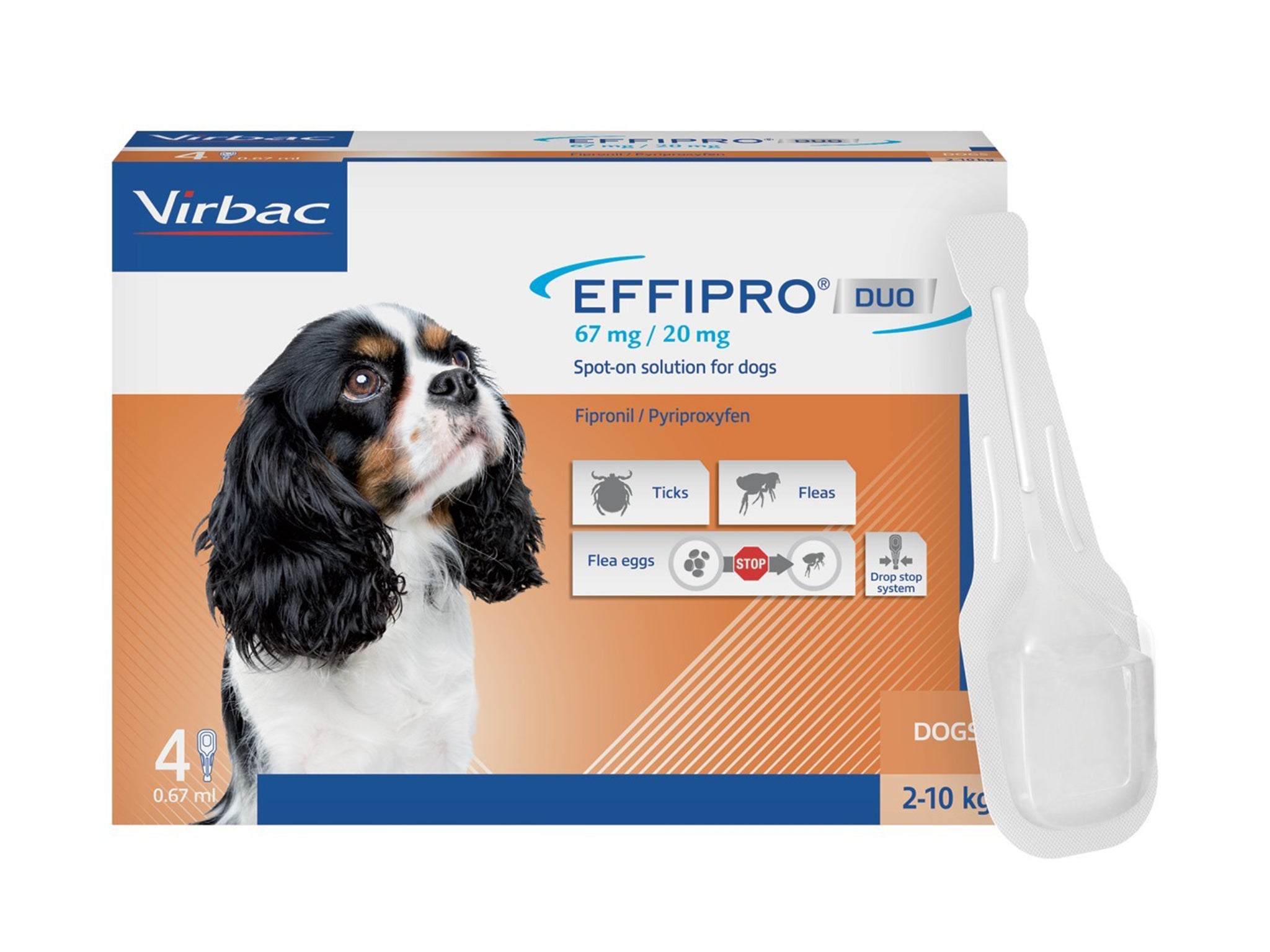
“Always make sure you wash your hands after applying the treatment,” advises Pohl, and, after application, it’s “important not to allow your dog to swim in watercourses for up to four days after, as the product can cause damage to marine life. If your dog swims or is bathed frequently, this may also reduce the efficacy of the products.”
Flea collars
Another option is a flea collar – Pohl says these work by “having an active ingredient embedded within the collar itself”. “This is released when the collar comes into contact with your pet’s skin. The product then travels in the skin to cover your pet and protect them from fleas.” Ideally, “look for a product that not only kills live fleas and ticks, but also repels them”, says Downing.
This Beaphar Canidhield collar (from £13, Supplementsolutions.co.uk) is NFA-VPS product and is available for both small and large dogs.
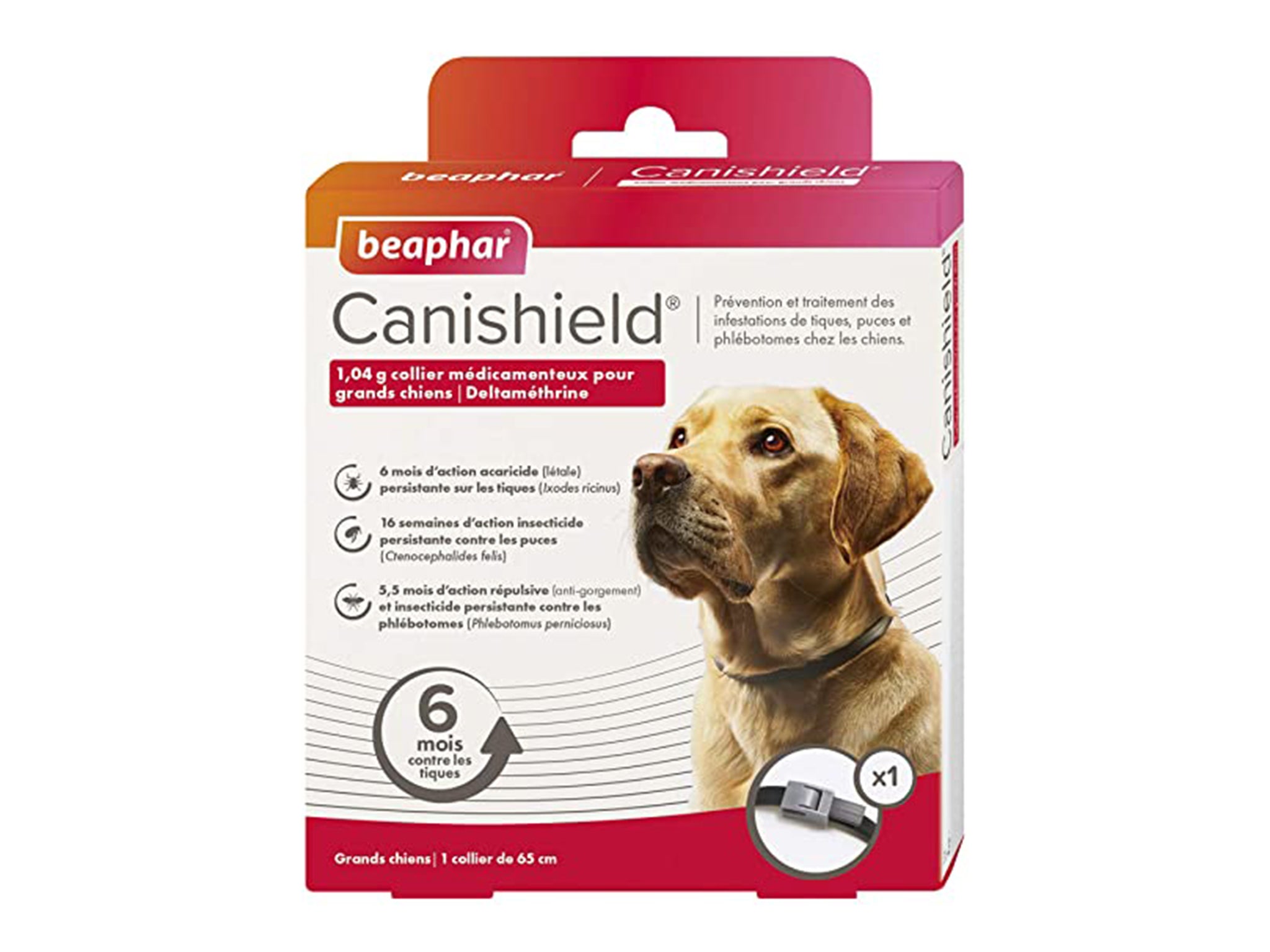
The brand recommends that for the best results, use it at least one week before your dog is likely to be exposed to ticks. It’s also said to be a great option if you’re travelling abroad where your dog will be at risk of leishmaniasis. It’s suitable for pups from seven weeks.
Oral treatments
“The final flea treatment option is an oral treatment”, says Pohl, “which comes in capsule and tablet form.” Want to know how they work? The active ingredient is “absorbed from the gut and taken into the bloodstream, which kills fleas when they bite your pet”, she explains.
“Different medications use different chemicals – some work very quickly but only last for a few days, while others can work for several months,” Pohl adds. With many of these types of treatments, you will have to get a prescription from the vet, which you will then need to upload to the retailer's site in order to make a purchase.
But Program tablets (from £28.90, Petdrugsonline.co.uk) are available to buy without a prescription – they should be given to your pooch, disguised in their food, once a month for at least six months during the flea season.
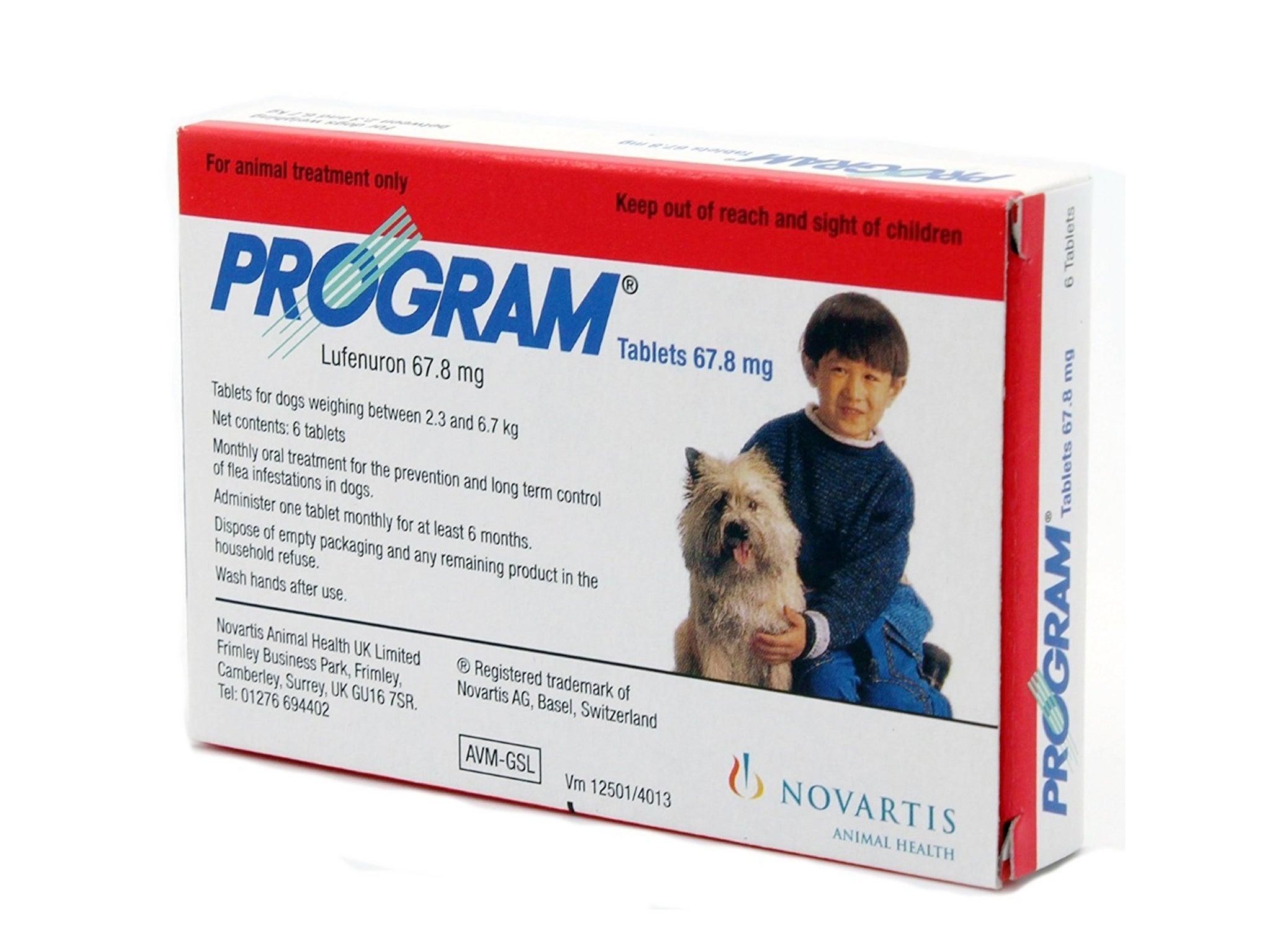
Flea treatment for your house
With 95 per cent of fleas living in the home, it’s “always recommend that you treat your home with a flea spray when trying to tackle an infestation”, says Downing. Flea sprays will be effective in killing live fleas, larvae and eggs, and thus breaking the fleas’ life cycle.
One option is this Virbac indorex defence household flea spray (£7.57, Amazon.co.uk), which kills adult fleas and house dust mites for up to two months after application. The brand also says it prevents the development of flea eggs and larvae for up to 12 months.
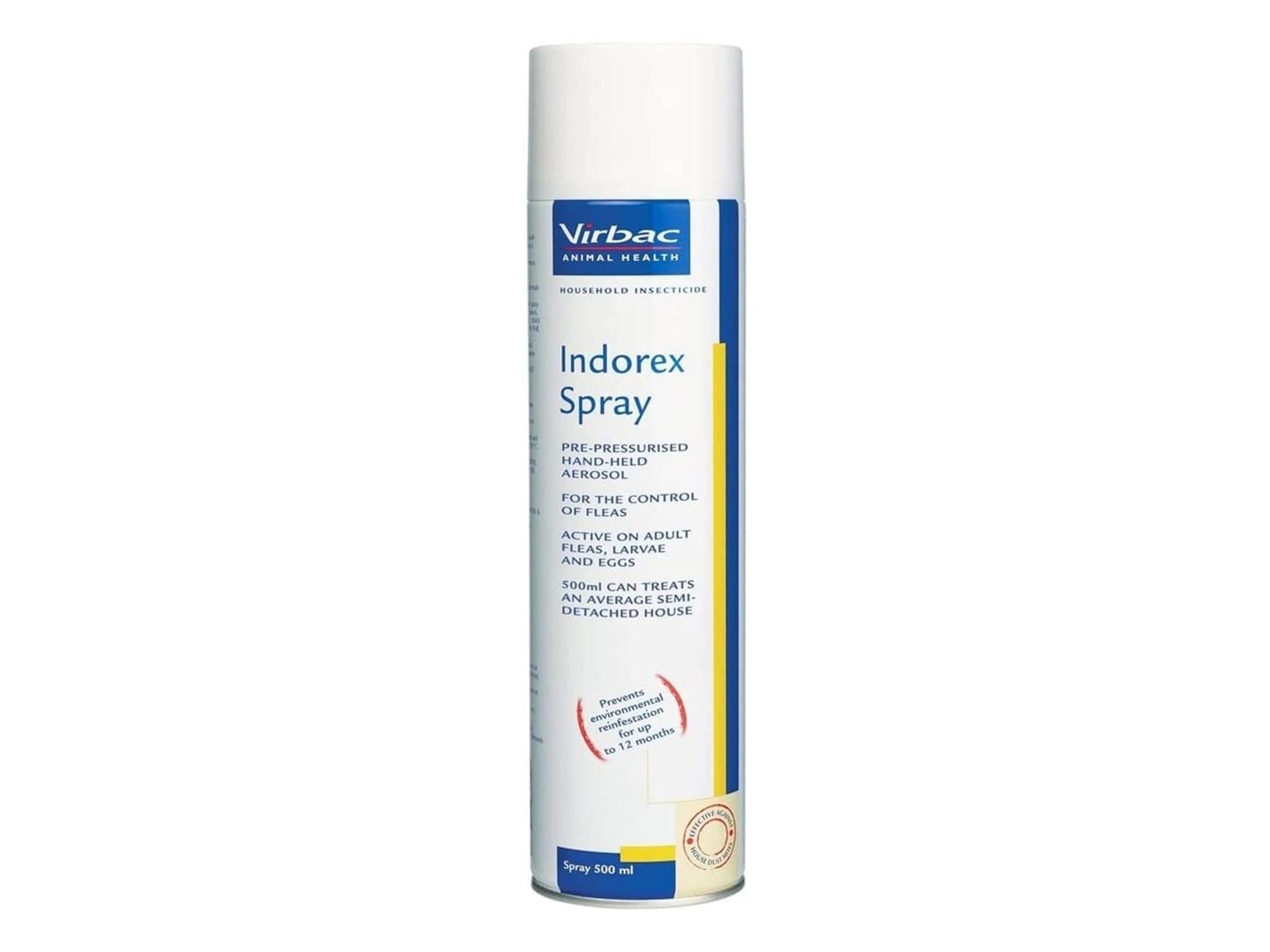
When using, hold the can at arm’s length and direct the spray towards the area you want to treat. It’s advised that you use a sweeping motion to apply the product and keep the can approximately 90cm from the area you’re treating.
Downing recommends using a flea spray “following deep cleaning of your home and washing of pet bedding and soft furnishings at a high temperature”. It’s important to regularly clean your dog’s bedding and vacuum furniture and floors so as to destroy the fleas at each stage of their life cycle.
Voucher codes
For the latest discounts on dog food and other pet essentials, try the links below:
Getting a new pooch? Read our puppy checklist for all the essentials you need